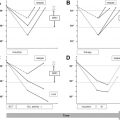Roughly 30% of patients with chronic lymphocytic leukemia (CLL) carry immunoglobulin receptors with highly similar primary sequences. Highly similar, quasi-identical immunoglobulins are termed stereotyped. Patients with CLL can be assigned to different subsets expressing different types of stereotyped immunoglobulin receptors. Reliable identification of stereotypy may assist in the molecular classification of CLL and thus better-guided, compartmentalized research. In several major subsets, stereotypy extends from shared primary sequences to shared clinicobiological features and outcome. Reliable identification of stereotypy in CLL may pave the way for tailored treatment strategies applicable to each major stereotyped subset.
Key points
- •
Roughly 30% of patients with chronic lymphocytic leukemia (CLL) carry immunoglobulin receptors with highly similar primary sequences.
- •
Highly similar, quasi-identical immunoglobulins are termed stereotyped.
- •
Patients with CLL can be assigned to different subsets expressing different types of stereotyped immunoglobulin receptors.
- •
Just a few subsets account for more than 10% of the entire cohort.
- •
Reliable identification of stereotypy may assist in the molecular classification of CLL and thus better-guided, compartmentalized research.
- •
In several major subsets, stereotypy extends from shared primary sequences to shared clinicobiological features and outcome, even beyond IGHV gene mutational status.
- •
Reliable identification of stereotypy in CLL may pave the way for tailored treatment strategies applicable to each major stereotyped subset.
Stay updated, free articles. Join our Telegram channel

Full access? Get Clinical Tree




